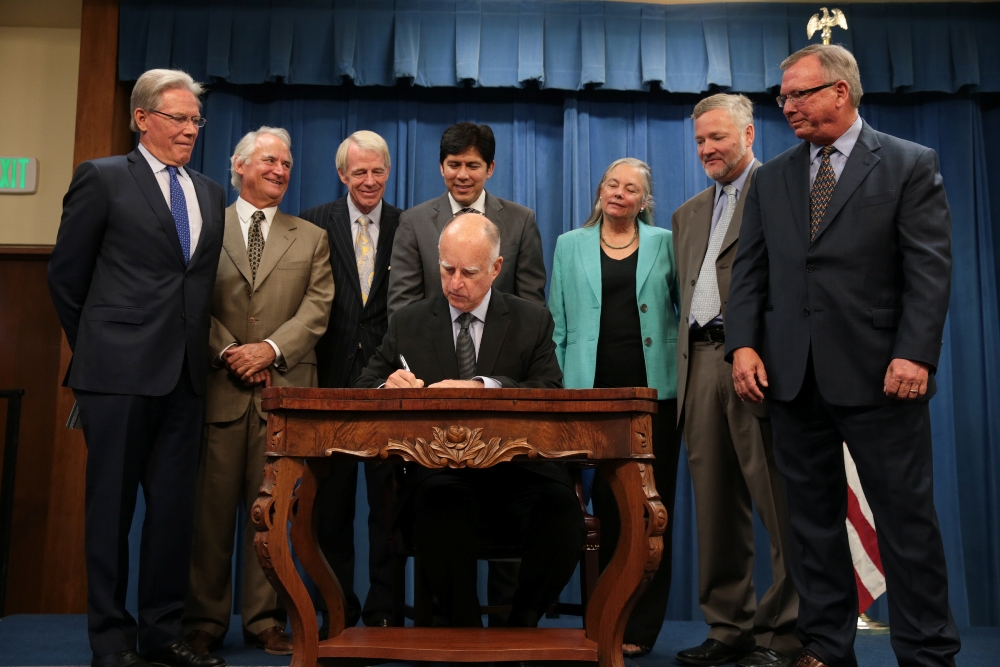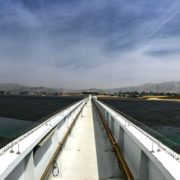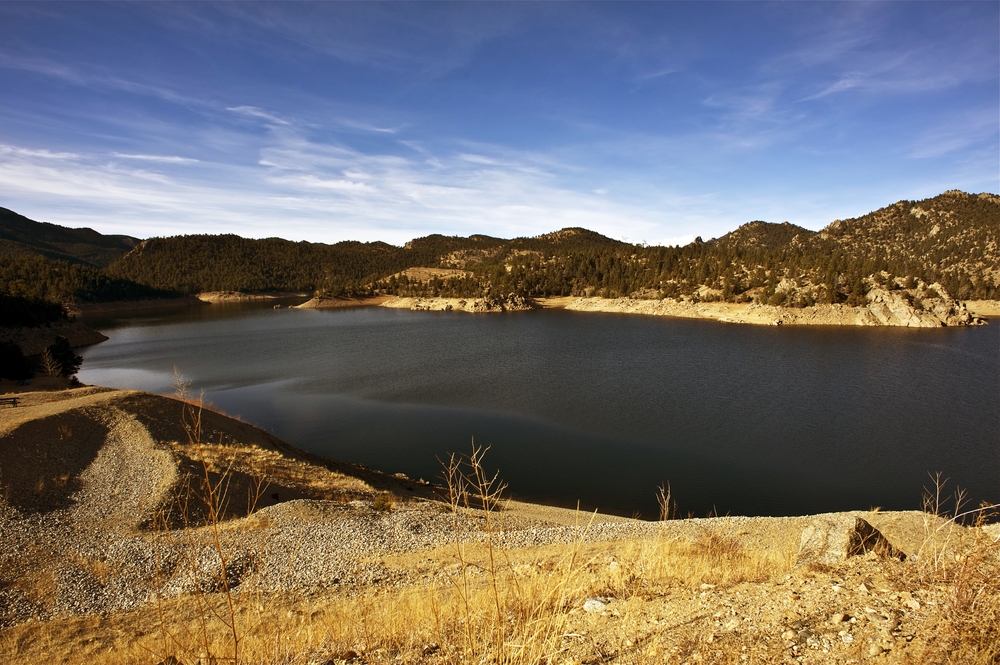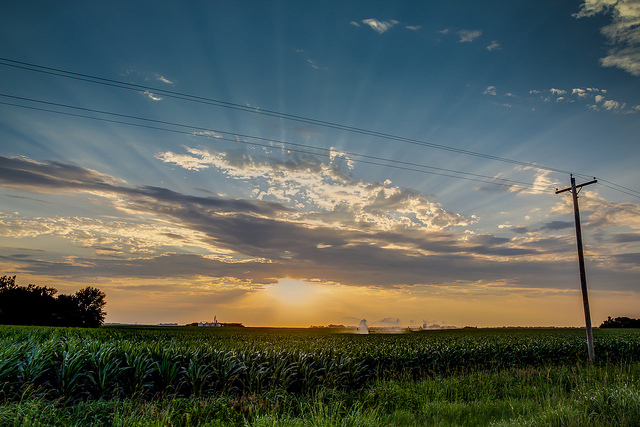California Governor Comes Full Circle on Groundwater Reform
New laws signed today address challenges highlighted in Jerry Brown’s first term – in the 1970s.

Drought in California today did what drought a generation ago could not – secure the passage of legislation that requires tighter controls on groundwater use in one of the few states without such measures.
The three bills signed this morning by Governor Jerry Brown are the first step in what will a long road to groundwater balance. The bills set a series of deadlines ending in 2040, when all of the state’s 515 groundwater basins are supposed to achieve “sustainability,” a term as yet only vaguely defined.
Brown, a Democrat, could be forgiven if he felt a sense of déjà vu at the signing. The language of the bills, as he noted, looked oddly familiar.
During Brown’s first term as governor in the late 1970s, California, as today, was rocked by a historic drought. The lack of moisture was so pervasive that he appointed a commission to review the state’s laws on water rights.
In a report published in December 1978, the commission unveiled its findings. Four areas of the law merited change, the 10-member panel concluded. Groundwater law was one of the four.
The commission’s analysis, now 36 years old, reads like a report fresh from one of the many think-tanks and policy groups so active in today’s groundwater debate.
“California’s extensive and extremely valuable groundwater resources are not adequately protected,” the report asserted. “Except in a few areas, groundwater extraction is not managed to the extent that oil and gas production, timber harvesting, mining, or even surface water diversions are. California’s groundwater is usually available to any pumper, public or private, who wants to extract it, regardless of the impact of extraction on neighboring groundwater pumpers or on the general community.”
The remedy proposed then was similar to the bills signed today: prod local agencies into action. The new laws, however, carry more weight and a stronger stick. State agencies will stand at the ready if local plans are deemed inadequate.
A generation ago, the water rights report landed with a thud, but groundwater reform did not come to be. The new laws, which were opposed by farm groups and many Republican lawmakers, will have a far more invigorating effect.
By June 1, 2016, the Department of Water Resources must adopt rules for evaluating local groundwater management plans. And by 2020 the first batch of local plans are due. That means lots of chatter in the next few years in California about how to define sustainable groundwater use and how to achieve it.
Brett writes about agriculture, energy, infrastructure, and the politics and economics of water in the United States. He also writes the Federal Water Tap, Circle of Blue’s weekly digest of U.S. government water news. He is the winner of two Society of Environmental Journalists reporting awards, one of the top honors in American environmental journalism: first place for explanatory reporting for a series on septic system pollution in the United States(2016) and third place for beat reporting in a small market (2014). He received the Sierra Club’s Distinguished Service Award in 2018. Brett lives in Seattle, where he hikes the mountains and bakes pies. Contact Brett Walton












Leave a Reply
Want to join the discussion?Feel free to contribute!